Teeth Whitening and Dental Laminates are two cosmetic dental procedures with substantial differences in purpose and methodology. Teeth whitening focuses on eradicating stains and discolouration, resulting in a smile that is brighter and whiter. Its primary objective is to enhance the natural tooth colour. The procedure involves the application of a high-concentration bleaching agent, either in-office with the aid of a specialised light or laser, or via take-home packages with custom-fitted trays containing a lower-concentration bleaching gel. Teeth whitening is a non-invasive and relatively rapid method for achieving a whiter smile, improving the appearance of the teeth.
Dental laminates, known as dental veneers, are thin, custom-made shells or layers that are adhered to the front surface of the teeth. They are used to addressing aesthetic issues like chips, fissures, stains, and misalignments. The purpose of dental laminates is to improve the appearance of the teeth by enhancing their size, shape, colour, and alignment. Initial consultation and treatment planning are followed by minimal enamel removal, impressions or digital scanning, and dental adhesive bonding of the custom-made laminates to the teeth. Dental laminates provide a comprehensive solution for smile transformation, delivering long-lasting results and addressing multiple cosmetic issues in a single procedure.
The advantages of teeth whitening include a brighter and whiter smile, the elimination of surface stains, and a relatively fast and affordable treatment. Dental laminates provide a comprehensive enhancement of appearance by enhancing the shape, size, colour, and alignment of the teeth. They offer long-lasting, natural-looking results and resolve multiple cosmetic concerns with a single procedure.
The cost of teeth whitening varies depending on the selected method, with in-office treatments costing between £200 and £700 and take-home kits costing between £200 and £400. Dental laminate prices vary based on location, dental clinic, and the number of laminates needed. Composite resin laminates range from £250 to £800 per tooth, while porcelain laminates cost between £500 and £1,200 per tooth.
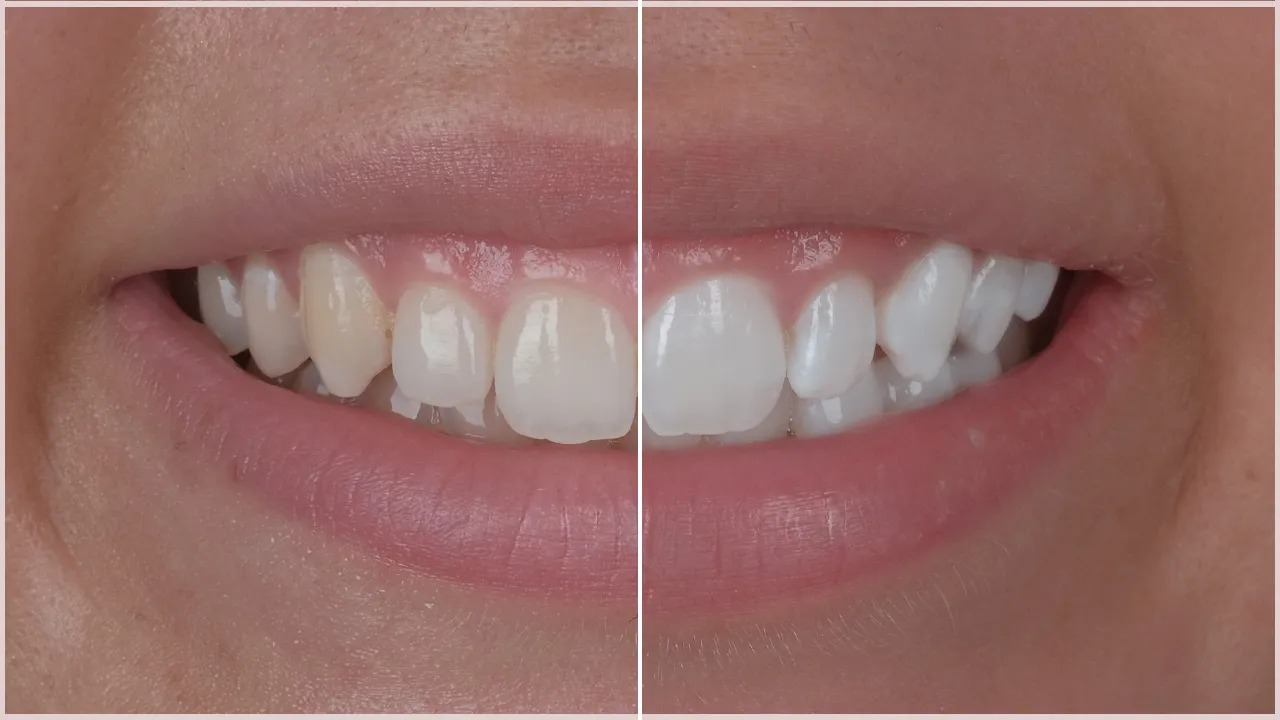
What is Teeth Whitening?
The purpose of teeth whitening is to lighten the colour of natural teeth and eliminate discolouration and blemishes. Teeth whitening is a popular treatment option for patients seeking a whiter, more radiant smile. Teeth become discoloured due to ageing, consumption of specific foods and beverages such as coffee, tea, and red wine, tobacco use, poor oral hygiene, and specific medications.
Teeth whitening therapies involve the application of bleaching agents to the teeth's surface. These bleaching agents, which typically contain hydrogen peroxide or carbamide peroxide, penetrate the enamel of the outermost layer of the teeth and break down the molecules responsible for discolouration. The procedure effectively whitens teeth and eliminates or reduces the appearance of stains.
Utilising custom-fitted trays or over-the-counter whitening products such as whitening strips, gels, or toothpaste is typical for at-home teeth whitening. These products contain lower concentrations of bleaching agents than in-office treatments and produce progressive whitening results over several days or weeks.
Note that teeth whitening treatments are not effective for all forms of discolouration. For example, teeth with intrinsic stains or internal discolouration caused by dental trauma, certain medications, or excessive fluoride exposure do not respond well to conventional whitening techniques. Alternative cosmetic dental procedures such as veneers or bonding are suggested.
Teeth whitening must be performed under the supervision of a dentist to ensure safety and effectiveness. Dentists identify the root cause of tooth discolouration, determine the most effective treatment method, and provide proper instructions for at-home whitening kits. Long-term oral health and maintaining the results of teeth whitening treatments require regular dental cleanings and exams in addition to routine dental examinations and excellent oral hygiene.
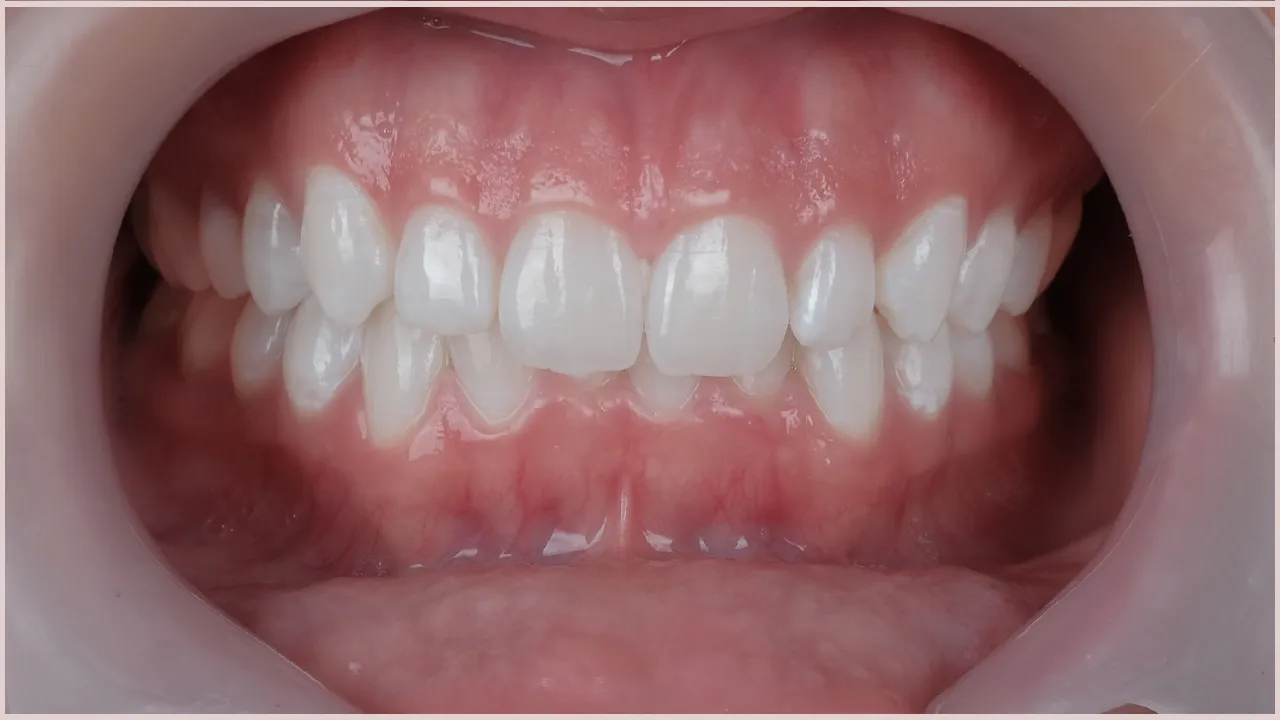
How does Teeth Whitening work?
Teeth whitening removes stains and discolouration from teeth using oxidising agents. Teeth whitening aims to attain a whiter, more appealing smile and enhance the appearance of the teeth.
Hydrogen peroxide and carbamide peroxide are the primary bleaching compounds used in teeth-whitening treatments. These agents permeate the enamel or the outermost layer of the teeth and degrade the molecules responsible for discolouration. The term for the process is oxidation.
Oxygen molecules are released and penetrate the enamel and the layer beneath the enamel of the teeth when the bleaching agent is applied to the teeth. The oxygen molecules interact with the stain molecules, breaking them down into fragments with less pigmentation. The teeth appear whiter and more brilliant.
The duration and effectiveness of the teeth whitening procedure are determined by the concentration and duration of the bleaching agent. In-office teeth whitening treatments administered by dental professionals typically employ higher concentrations of bleaching agents and are accelerated by the use of specialised apparatus such as dental lasers and light-activated systems. It enables quicker and more significant whitening results, which are achieved in a single visit.
Home teeth whitening options employ bleaching compounds at lower concentrations. These include custom-made whitening trays or over-the-counter whitening strips, lubricants, or toothpaste. At-home treatments are performed over several days or weeks, with the bleaching agent being applied daily for a specific duration. The progressive nature of at-home whitening treatments permits greater control over the degree of whitening and reduces the risk of tooth sensitivity.
Teeth whitening therapies are most effective for extrinsic stains, which are surface stains caused by external factors such as food, beverages, and tobacco use. Internal stains, such as those caused by dental trauma or certain medications, do not respond to conventional teeth whitening techniques. Alternative cosmetic dental procedures are suggested.
The primary purpose of teeth whitening is aesthetic. Teeth whitening helps people attain a whiter, more youthful-looking smile, boosts self-esteem, and improves their appearance. It is a popular treatment option for individuals dissatisfied with the colour of their teeth due to stains or discolouration caused by a variety of factors. It is crucial to note that teeth whitening does not produce permanent results, and touch-up and maintenance treatments are required to prolong the effects.
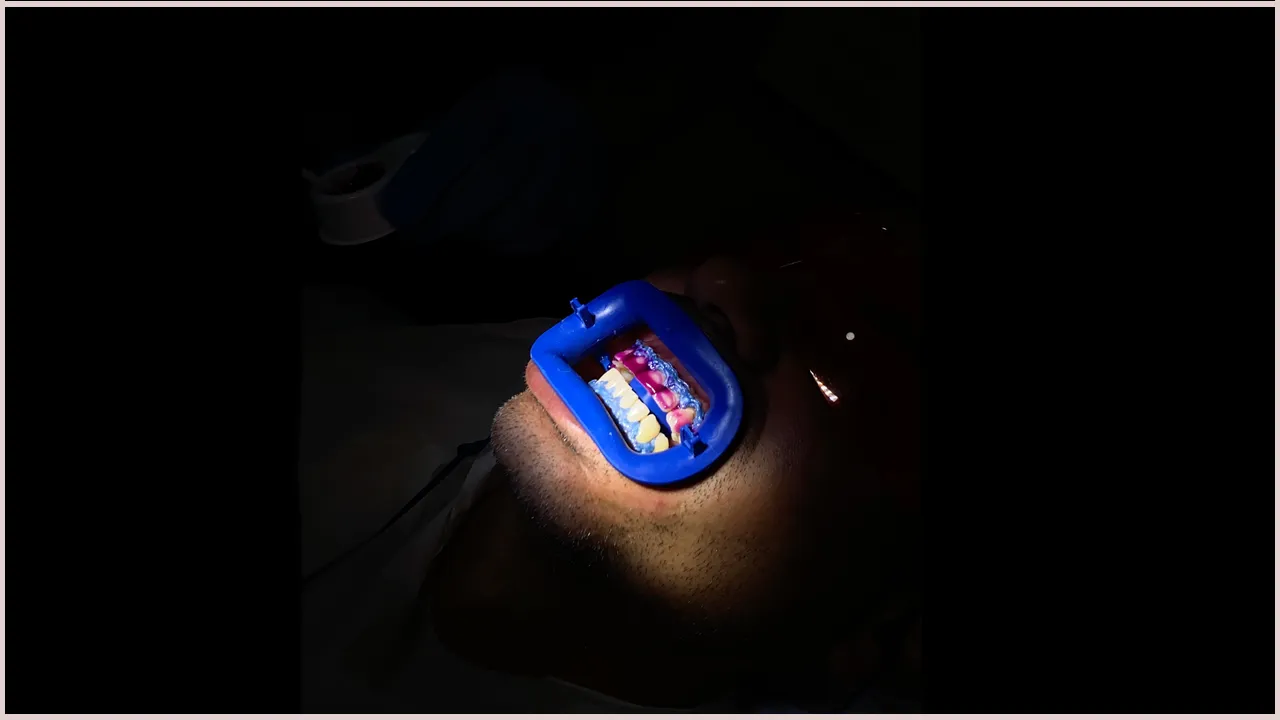
What are the situations in which Teeth Whitening is preferred?
Listed below are the situations in which Teeth Whitening is preferred.
- Special Events: Individuals opt for teeth whitening before marriages, graduations, job interviews, and other significant social events. A more radiant smile boosts one's confidence and leaves a favourable impression on others.
- Stained or Discoloured Teeth: Teeth become tainted or discoloured for a variety of reasons, including ageing, consumption of certain foods and beverages such as coffee, tea, and red wine, tobacco use, poor oral hygiene, and certain medications. Teeth whitening effectively eliminates such extrinsic stains and restores the teeth's natural brilliance.
- Smile Enhancement: Teeth whitening is frequently sought after as a cosmetic procedure to improve the appearance of the smile. It makes teeth appear more aesthetically pleasing, sprightly, and vibrant.
- Dental Restorations: Teeth whitening is utilised to restore dental restorations such as dental crowns, veneers, and bonding. The effects of whitening agents are exclusively for natural teeth, and dental restorations need to be replaced to match the new hue of the whitened teeth.
- Self-Confidence Enhancement: Individuals with discoloured teeth feel self-conscious and reluctant to smile. Teeth whitening boosts self-esteem by creating a more aesthetically appealing smile, resulting in greater self-assurance and a positive self-perception.
- Reversing Natural Tooth Yellowing: Normal ageing processes cause teeth to turn yellow or lose their brilliance over time. The natural discolouration is effectively reversed by teeth whitening, revitalising the appearance of the teeth.
What is the importance of Teeth Whitening?
Teeth whitening is important for enhancing one's appearance and confidence. Teeth whitening is regarded as one of the finest available teeth-whitening options. It considerably improves the colour and brilliance of teeth, resulting in a more attractive smile. A white and bright smile is frequently associated with youth, vitality, and excellent oral health, making it a desirable trait for many people.
The cosmetic dental procedure not only improves one's self-esteem but leaves others with a favourable impression. A confident smile with white teeth enhances personal interactions. Teeth whitening effectively reverse staining and discolouration caused by factors such as ageing, diet, smoking, and certain medications. It removes these stains, restoring the teeth's natural luminosity and enhancing the smile's overall appearance.
Teeth whitening is a non-invasive and economical alternative to more extensive cosmetic dental procedures. Teeth whitening provides noticeable results with minimal discomfort and recovery time, making it accessible to a wide range of people seeking to improve their smile. Personal gratification and a sense of pride in one's appearance result from achieving a brighter, whiter smile through teeth whitening. It serves as an incentive to maintain excellent oral hygiene and dental health.
It is recommended to consult with a dentist who provides expert guidance and recommends the most appropriate treatment option based on the individual's requirements and oral health condition for the best teeth whitening results.
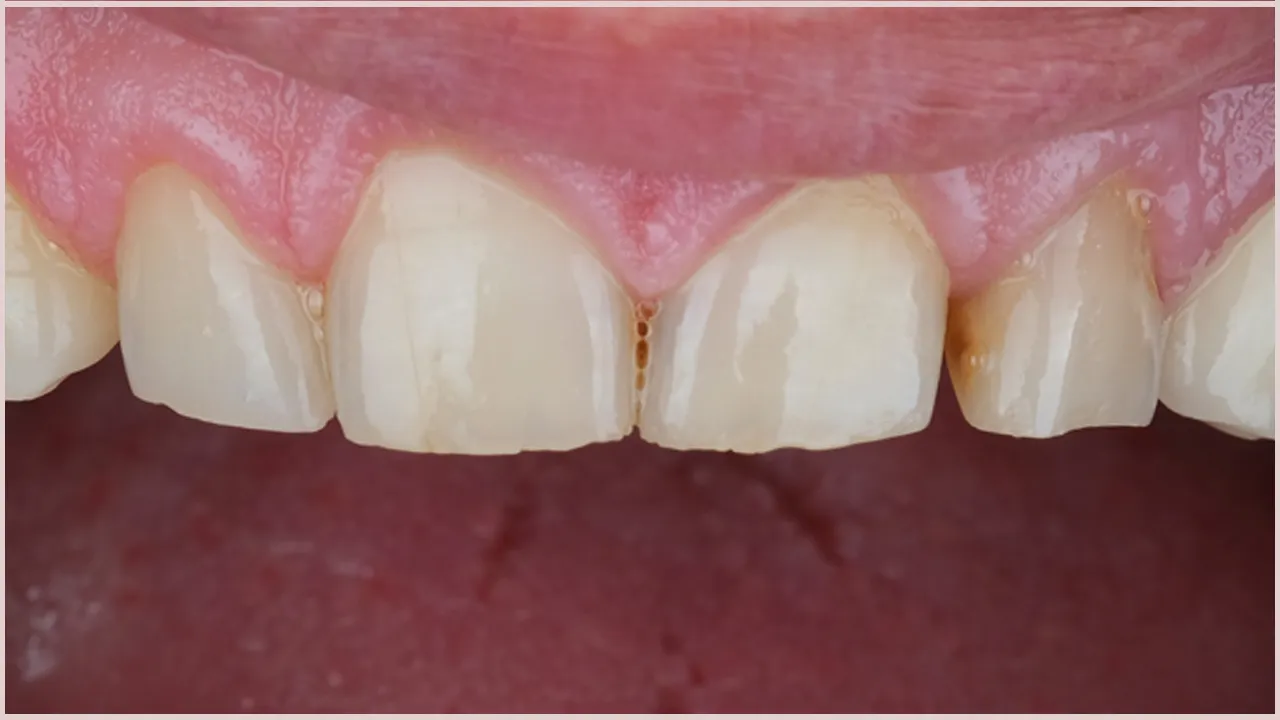
Where to get Teeth Whitening?
Search "teeth whitening near me" to locate dental offices in the area that provide teeth whitening services when looking for teeth whitening options in the area. Teeth whitening at the dentist is one of the most reliable and recommended locations for teeth whitening. Dentists are trained professionals who provide effective and safe teeth whitening treatments.
Dentists have access to professional-grade bleaching agents and cutting-edge methods for optimal results. Take advantage of the dentist's expertise and individualised treatment plans tailored to one’s requirements by visiting a dentist for teeth whitening. Dental professionals assess oral health, identify any underlying problems, and ensure that the whitening procedure is appropriate for the individual.
What are the benefits of Teeth Whitening?
Listed below are the benefits of Teeth Whitening.
- Confidence Booster: A white and bright smile boosts self-esteem and confidence. People are more likely to smile freely and feel at ease in social and professional settings when they are comfortable with the appearance of their teeth.
- Smile Enhancement: Teeth whitening noticeably lightens the colour of the teeth, enhancing the appearance of a smile. It helps remove staining and discolouration caused by factors such as age, diet, and lifestyle, resulting in a smile that is more vibrant and appealing.
- Personal Satisfaction: Teeth whitening gives a whiter smile and a sense of pride in appearance. Personal satisfaction is one of the benefits of teeth whitening that enhances dental hygiene and encourages maintaining a healthy mouth.
- Positive Impression: A white smile produces a favourable and memorable first impression on others. It projects an image of excellent oral hygiene and health in social, personal, and professional settings.
- Convenient and Non-Invasive: Teeth whitening is a non-invasive procedure that is completed in a brief period. It is a practical cosmetic treatment option that produces noticeable results with minimal discomfort and recovery time.
- Low-cost Cosmetic Solution: Teeth whitening is more affordable and accessible in comparison to other extensive dental cosmetic procedures. It is a cost-effective method for improving a smile and achieving a whiter, livelier appearance.
What are the risks associated with Teeth Whitening?
Listed below are the risks associated with Teeth Whitening.
- Sensitive Tooth: Temporary tooth sensitivity is one of the most common adverse effects of teeth whitening. The sensitivity occurs during or after treatment and results in moderate discomfort or pain. It resolves on its own within a few days or weeks after the whitening procedure has been completed.
- Irritation of the Gums: The bleaching agents used in teeth whitening treatments irritate the gums. Teeth whitening causes transient gum sensitivity, inflammation, or redness. It is essential to adhere to the instructions of dental professionals to minimise the risks associated with teeth whitening.
- Uneven Whitening: Teeth are not whitened evenly. Certain tooth regions appear paler or darker than others, resulting in an uneven or blotchy appearance. Uneven whitening occurs due to variations in enamel thickness or the presence of difficult-to-remove profound stains.
- Allergic Reactions: Some individuals experience allergic reactions to the compounds in teeth-whitening products. It is essential to inform the dentist beforehand when experiencing a known allergy or sensitivity to any of the bleaching agent's components.
What is Dental Laminate?
Dental laminate is a cosmetic dental procedure involving the application of tooth-coloured casings or layers of tooth-coloured material to the front surface of the teeth. Dental laminate is known as a dental veneer or dental lamination. The casings are composed of porcelain or composite resin and are intended to enhance the shape, size, colour, and aesthetics of the teeth.
Dental laminates are a popular option for people who wish to resolve a variety of cosmetic issues, such as chipped, cracked, or stained teeth, and spaces between teeth or minor misalignments. They create a smile that appears natural and appealing using a solution that is durable, stain-resistant, and long-lasting.
Consult with a dentist to determine if dental laminates are appropriate for a particular case. The dentist evaluates the condition of the teeth, discusses alternative treatment options, and provides individualised recommendations based on the desired outcome and oral health condition.
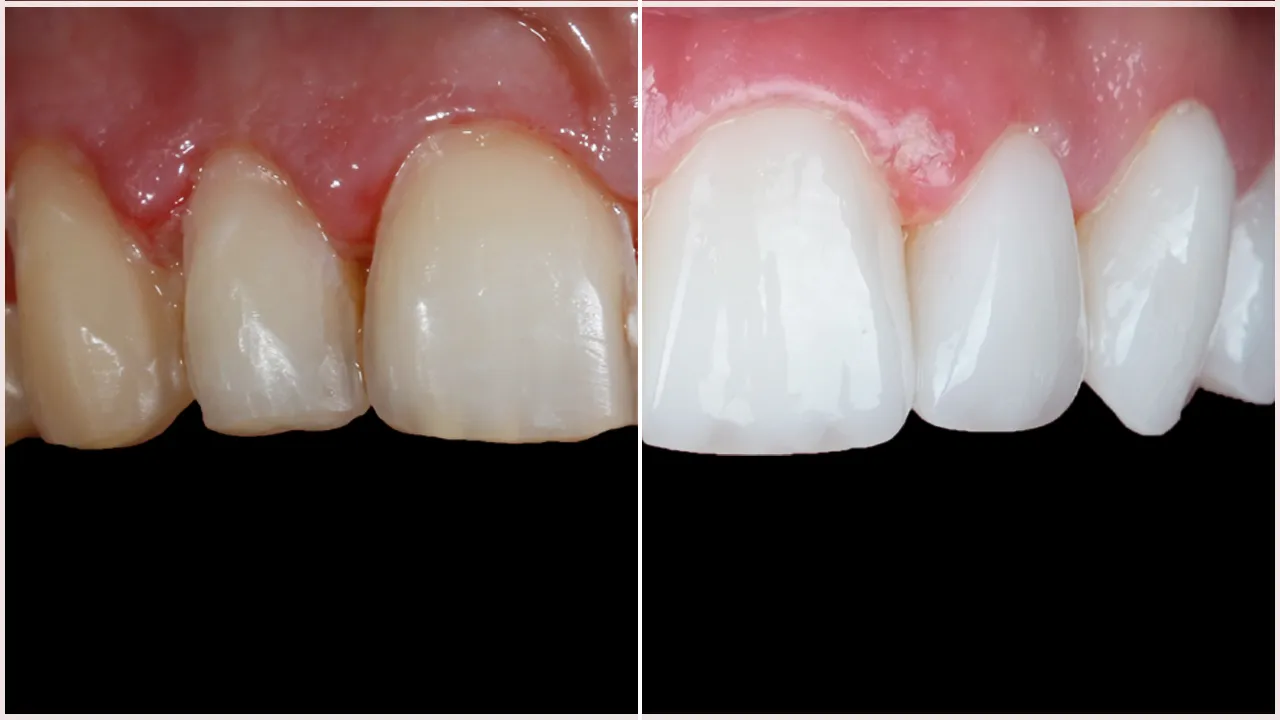
How do Dental Laminates work?
Dental laminates work by covering the front surface of the teeth with tooth-coloured casings or layers. Dental laminates are intended to enhance the appearance of teeth and produce a more aesthetically pleasing smile, which is made of porcelain or composite resin.
The dental lamination procedure involves multiple steps. A dentist conducts a comprehensive examination of the patient's teeth to determine their condition and to discuss the intended outcome with the patient. A small quantity of enamel is removed from the front surface of the teeth to create space for the laminate. Impressions or digital scans of the teeth are obtained to create custom-made laminates in a dental laboratory. The last laminates are affixed to the teeth using a special dental adhesive after being shaped and shaded to resemble natural teeth by skilled technicians.
The purpose of dental laminates is predominantly aesthetic, as they aim to improve the shape, size, colour, and appearance of the teeth. Dental laminates resolve a variety of cosmetic issues, such as chipped, cracked, discoloured teeth, or spaces between teeth and minor irregularities. They offer a solution that is durable, stain-resistant, and long-lasting for achieving a more uniform and appealing smile.
Which situations are Dental Laminates typically preferred for?
Listed below are the situations are Dental Laminates typically preferred.
- Teeth with chips, cracks or fractures: Dental laminates effectively cover and conceal teeth with cracks, chips or fractures, enhancing their appearance and restoring a more uniform appearance.
- Teeth Discolouration or Staining: Dental laminates conceal tooth discolouration or stained teeth that does not respond well to teeth whitening treatments. They offer a long-term solution for attaining a whiter and brighter smile.
- Teeth that have gaps: Dental laminates are used to close gaps between teeth, resulting in a more uniform and aligned smile.
- Minor Tooth Misalignment: Dental laminates provide the appearance of straightened teeth to individuals with minor tooth misalignment issues without the need for orthodontic treatment. Misaligned bites, overcrowding, and jaw irregularities are common issues that can significantly impact oral function and appearance, all of which are classified as malocclusion of teeth.
- Irregularly Shaped Teeth: Dental laminates enhance the shape and symmetry of irregularly shaped teeth, resulting in a more aesthetically pleasing smile.
What is the importance of Dental Laminates?
The importance of dental laminates rests in their capacity to significantly improve tooth appearance and create a more aesthetically pleasing smile. Dental laminates resolve a variety of cosmetic issues, including chipped, cracked, discoloured, or misaligned teeth which are custom-made shells or layers bonded to the front surface of teeth.
Laminates play a vital role in boosting self-confidence and self-esteem, by concealing and reshaping the teeth. They are intended to closely resemble the natural appearance of teeth, with materials such as porcelain providing a similar translucency and reflectivity as dental enamel.
The customisation guarantees a seamless and natural-looking outcome that enhances the smile's attractiveness. Dental laminates are a minimally invasive option that preserves the natural tooth structure with minimal enamel excision. They are known for their resilience and resistance to stains, and with appropriate care and maintenance, they last for many years.
The primary objective of dental laminates is to improve the appearance of teeth by enhancing their colour, shape, size, and aesthetics. Individuals attain a long-lasting solution to their aesthetic concerns and enjoy a more attractive smile by seeking dental laminates.
Where to get Dental Laminates?
Get dental laminates by consulting with a dentist who specialises in cosmetic dentistry. Dental laminates are obtained from a general dentist who offers a variety of cosmetic dental treatments. General dentists are qualified to evaluate oral health, discuss aesthetic objectives, and recommend appropriate treatment options, such as dental laminates.
Cosmetic dentists concentrate on enhancing the appearance of teeth and smiles and offer specialised approaches and expertise in cosmetic procedures such as dental laminates.
Prosthodontists are dental specialists who focus on the restoration and replacement of teeth, as well as aesthetic dental procedures. They are proficient in the planning and execution of comprehensive treatment for dental laminates.They are proficient in the planning and execution of comprehensive treatment for dental laminates, making them the ideal prosthodontist to consult for achieving natural-looking and long-lasting laminate veneer results.
Ask friends, family, or a regular dentist for referrals to locate a dental professional who offers dental laminates. Local dentists specialising in cosmetic dentistry or dental laminates are located through online searches.
Reading patient reviews and observing before-and-after photos provide insight into a dentist's skill and patient satisfaction when choosing a dentist. Schedule a consultation to discuss specific needs, undertake a thorough examination, and receive individualised advice regarding the suitability of dental laminates.
The dentist clarifies the benefits and risks, guides the individual through the treatment process, and develops a personalised treatment plan to help in achieving the desired smile transformation.
What are the benefits of Dental Laminates?
Listed below are the benefits of Dental Laminates.
- Enhance smile aesthetics: Dental laminates significantly enhance the aesthetics of a smile. They address a variety of aesthetic issues, including chipped, fractured, stained, or misaligned teeth. Laminates create a more homogenous, symmetrical, and aesthetically pleasing smile, enhancing facial aesthetics as a whole.
- Natural-Looking Results: Dental laminates are intended to closely resemble natural teeth in appearance. The utilised materials, such as porcelain or composite resin, possess the same translucency and reflectivity as tooth enamel. It enables laminates to blend seamlessly with the neighbouring teeth, resulting in a result that appears natural.
- Individualization: Dental laminates are tailored to each person's unique dental anatomy. They are customised to mirror the adjacent teeth' colour, size, and shape, ensuring a natural and harmonious appearance. The customisation guarantees that the laminates are tailored to the patient's aesthetic objectives.
- Durable: Dental laminates are resilient and long-lasting, particularly those manufactured from porcelain. They are resistant to discolouration caused by food, beverages, and tobacco use, allowing for a longer-lasting, brighter smile. Dental laminates last for decades with proper maintenance and care.
- Versatility: Dental laminates resolve multiple aesthetic concerns with a single treatment due to their versatility. They enhance the colour, shape, size, and alignment of teeth, making them a versatile way to improve the appearance of the smile.
What are the risks associated with Dental Laminates?
Listed below are the risks associated with Dental Laminates.
- Sensitive Tooth: Some individuals experience transient tooth sensitivity after receiving dental laminates. The sensitivity is usually mild and transient, but it occurs if a small amount of enamel is removed during the preparation procedure.
- Irreversible Procedure: Dental laminates are considered irreversible procedures because a small quantity of tooth enamel is removed during the preparation phase. The tooth is restored once the enamel has been removed. It is essential to thoroughly consider the decision and ensure that dental laminates are the best option for the needs.
- Fracture or Damage: Dental laminates are susceptible to fracture or damage under certain conditions, despite being durable and designed to withstand normal biting and gnawing forces. Chewing on hard objects such as ice or pen caps chips and damaged laminates. It is essential to avoid behaviours that place excessive stress on laminates.
- Replacement or Repair: Dental laminates require replacement or repair in the future, despite being durable. Dental laminates last for decades with appropriate care and upkeep.
What procedure is recommended for quick discolouration fixes?
A professional teeth-whitening procedure is frequently recommended for quick discolouration correction. Professional teeth whitening effectively remove surface stains and produce observable results in a brief period. There are two primary options for professional teeth whitening.
The first is teeth whitening administered by a dental professional in the dentist's office. A bleaching agent with a high concentration is administered to the teeth during the procedure. The bleaching agent is activated by a specialised light or heat source, which speeds up the whitening procedure. One session of in-office teeth whitening takes between one and two hours, and the results are visible immediately.
Take-home teeth whitening kits, which are customised packages provided by a dental professional for use at home, are the second option. These packages include custom-fitted trays and a bleaching gel with a lower concentration. The patient fills the trays with the gel and wears them for a specified period each day as instructed by the dentist. Take-home teeth-whitening kits yield results within a few days or weeks, depending on the specific treatment plan.
The treatments done in-office and at-home teeth whitening are effective for removing surface discolouration caused by coffee, tea, tobacco, and certain foods. It is essential to note that professional teeth whitening predominantly targets extrinsic stains on the tooth's outer layer. It is not as effective against intrinsic stains, which originate within the tooth structure.
What procedure is recommended for long-term aesthetic teeth fixes?
There are several procedures recommended based on individual dental issues and desired outcomes for long-term aesthetic teeth fixes. One common procedure is dental laminates or veneers, which are thin custom-made shells bonded to the front surface of the teeth. Dental laminates address various cosmetic concerns like chips, cracks, stains, or misalignments and provide long-lasting aesthetic improvements by enhancing the shape, size, and colour of the teeth.
Dental crowns, or dental caps, are another option. Dental crowns completely cover damaged or decayed teeth, offering functional and aesthetic benefits. It is durable and provides lasting aesthetic improvements, especially for extensively damaged teeth.
How much do Teeth Whitening and Dental Laminates cost?
The cost of teeth whitening and dental laminates varies significantly based on factors such as location, the dental clinic's reputation, the complexity of the case, and the materials used.
For teeth whitening, in-office treatments typically range from £200 to £700, while take-home whitening packages are slightly more affordable, costing between £200 and £400. In Turkey, teeth whitening procedures are considerably more budget-friendly, priced between £240 and £400.
When it comes to dental laminates, prices also vary depending on whether they are made from porcelain or composite resin:
- Porcelain laminates cost between £270 and £1,200 per tooth in the UK, while in Turkey, the cost ranges from £240 to £300 per tooth.
- Composite resin laminates are less expensive, ranging from £70 to £800 per tooth in the UK, compared to £50 to £120 per tooth in Turkey.
The substantial price difference for veneers between the UK and Turkey is primarily due to lower operational costs and competitive pricing in Turkey's thriving dental tourism market. Despite the cost savings, Turkish dental clinics maintain high standards, offering state-of-the-art facilities and experienced dentists.These prices are approximations that vary based on individual circumstances and the dental care provider. It is recommended to consult with a dentist to obtain an accurate cost estimate that is tailored to the individual’s specific requirements. They assess oral health, explain the available treatment options, and provide a personalised treatment plan with associated costs.
How do Teeth Whitening and Dental Laminates differ in the process?
The procedures and purposes of teeth whitening and dental laminates are different. The purpose of teeth whitening is to eradicate stains and discolouration from the teeth, resulting in a whiter and brighter smile. There are various methods available for whitening teeth. The use of teeth whitening strips is a popular method, which are thin, flexible strips coated with a peroxide-based whitening gel.
Teeth whitening strips are applied directly to the teeth and left in position for a specified period, allowing the peroxide to break down stains and gradually whiten the teeth. Laser teeth whitening is an in-office teeth whitening performed by a dental professional using a bleaching agent with a high concentration that is activated by a specialised light or laser. The technique yields immediate and observable results.
Dental laminates are thin, custom-made shells or layers that are adhered to the front surface of the teeth. The primary function of dental laminates is to improve the shape, size, colour, and aspect of the teeth. The fabrication of dental laminates is a multistep procedure. The process begins with a consultation and treatment planning phase, during which the dentist evaluates the teeth, discusses the desired outcome, and creates a customised treatment plan.
The next step is tooth preparation, which entails minimal enamel removal to make room for the placement of the laminate. Impressions or digital scans are used to construct bespoke laminates. A dental adhesive is used to bond the laminates to the molars. The dentist ensures proper fit, shape, and colour, making any adjustments necessary to achieve a seamless blend with the adjacent teeth.
Teeth whitening methods, such as whitening strips and in-office procedures, aim to remove stains and enhance natural teeth. Dental laminates offer a more comprehensive and permanent solution for improving the aesthetics of the teeth. They address a variety of cosmetic issues and result in a smile that is transformed and aesthetically appealing.
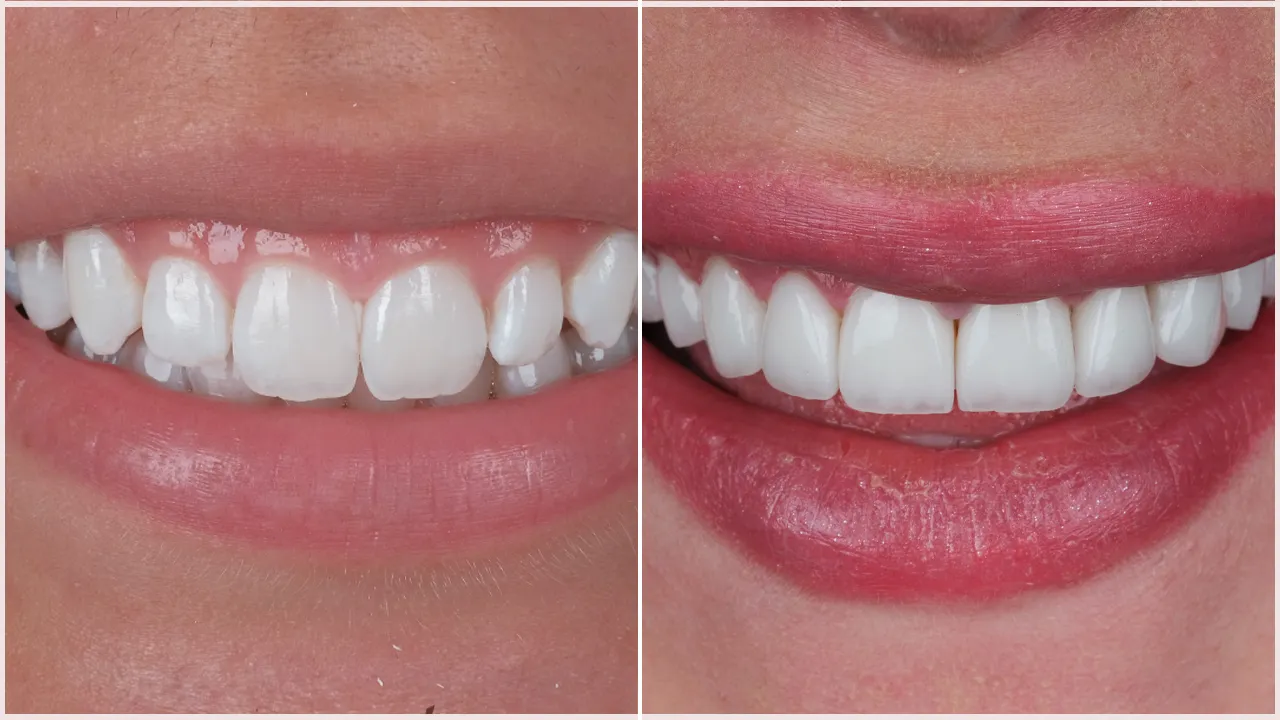
What foods and drinks to avoid after the Teeth Whitening and Dental Laminate process?
Listed below are the foods and drinks to avoid after the Teeth Whitening and Dental Laminate process.
- Colouring Beverages: Avoid drinking beverages known to cause stains, such as coffee, tea, red wine, and dark-coloured sodas. These beverages contain pigments that discolour teeth and diminish the efficacy of teeth whitening, as well as the visual appeal of dental laminates.
- Acidic foods and beverages: Acidic foods and beverages weaken tooth enamel, making it more susceptible to discolouration and injury. Citrus fruits, citrus juices, carbonated beverages, and vinegar-based dressings are examples. Limit the intake of acidic foods and beverages to preserve the health of the teeth.
- Dark sauces: Dark sauces including soy sauce, tomato sauce, and balsamic vinegar stain teeth. Avoid or limit their consumption, particularly in the initial days following teeth whitening or dental laminate procedures.
- Berries and Fruit Juices: Berries contain compounds that stain teeth, including blueberries, blackberries, and raspberries. Fruit fluids derived from these fruits discolour teeth. It is best to avoid or limit the consumption of such items during the initial phases of the whitening or laminate process.
- Tobacco Products: Smoking and smokeless tobacco severely discoloured and stained dentition. It is recommended that smokers and tobacco users cease or at least reduce their consumption to maintain the results of teeth whitening or the appearance of dental laminates.
- Foods that are Rigid and Sticky: Dental laminates necessitate extra care when ingested. Hard or sticky foods damage or dislodge the laminates. Hard and sticky foods include hard candies, ice, chewy caramel, and sticky candies.
Is pain experienced during Teeth Whitening or Dental Laminate process?
Yes, pain is experienced during teeth whitening or the dental laminate process. Some individuals experience tooth sensitivity or mild discomfort during the teeth whitening process. The sensitivity is temporary and resolves on its own. It is important to note that not everyone experiences pain during teeth whitening.
The level of discomfort varies from person to person, and some individuals do not feel any pain at all. If any sensitivity or discomfort is felt, it is typically mild and manageable. The pain level experienced during teeth whitening is often reported to be around 1 to 3 on a scale of 1-10, with 1 being minimal pain and 10 being severe pain based on consumer feedback.





